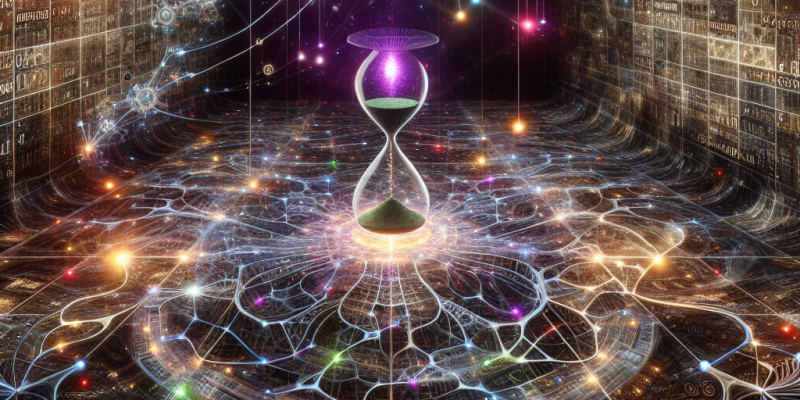Neural Networks Reimagined: Exploring the Cutting-Edge of Machine Learning Research

Neural Networks Reimagined: Exploring the Cutting-Edge of Machine Learning Research
Introduction
The field of machine learning has experienced a renaissance over the past decade, with neural networks emerging as one of the most transformative tools in artificial intelligence (AI). Initially inspired by the human brain’s neuronal connections, modern neural networks have evolved dramatically, paving the way for innovative applications across various domains including healthcare, finance, natural language processing, and even creative arts. As researchers continue to challenge traditional architectures and push the boundaries of what neural networks can achieve, we stand on the cusp of a new era in machine learning. This article explores some of the latest advancements and paradigms that are reshaping the future of neural networks.
From Feedforward to Transformative Architectures
Traditional neural networks, primarily feedforward models, consist of layers of artificial neurons that process input data to produce an output. However, the introduction of more complex architectures has significantly enhanced performance.
-
Convolutional Neural Networks (CNNs): Used extensively in image and video processing, CNNs leverage spatial hierarchies to recognize patterns efficiently. They have revolutionized fields like computer vision from facial recognition to autonomous driving.
-
Recurrent Neural Networks (RNNs): Designed for sequential data, RNNs (and their advanced versions, Long Short-Term Memory networks or LSTMs) excel in tasks involving time series analysis and natural language processing. Their ability to retain information through time allows for applications like language translation and speech recognition.
- Transformers: Originally developed for natural language processing, transformers have reshaped how neural networks handle sequence data. By employing self-attention mechanisms, transformers can weigh the importance of different words in a sentence, leading to superior model performances in tasks such as text generation and summarization. The introduction of models like BERT and GPT-3 has exhibited breathtaking capabilities, proving that scale and context can yield unprecedented understanding.
Beyond Traditional Structures: Emerging Paradigms
As researchers push the limits of conventional architectures, several emerging paradigms are gaining traction:
-
Neural Architecture Search (NAS): This automated approach uses machine learning techniques to optimize neural network architectures, discovering new designs that might outperform human-engineered models. NAS has led to breakthroughs in efficiency, allowing for more compact models that retain performance levels, crucial for deployment in resource-constrained environments.
-
Graph Neural Networks (GNNs): GNNs bring a novel way of processing data that comes in the form of graphs, making them ideal for applications in social network analysis, molecular biology, and recommendation systems. They allow researchers to model relationships and interactions dynamically, further broadening the capabilities of neural networks.
- Neuro-Symbolic AI: Bridging the gap between traditional symbolic reasoning and neural networks, this paradigm enhances the capability of machines to comprehend and reason about the world with core logic principles. By enabling an understanding of symbolic representations alongside pattern recognition, neuro-symbolic AI aims for more generalizable and interpretable AI systems.
Interpretability and Ethical Considerations
With the growth of neural networks comes a pressing need for interpretability and ethical considerations. As models become increasingly complex, understanding their decision-making process becomes pivotal, especially in sensitive applications like healthcare and criminal justice. Researchers are exploring techniques such as attention visualization, saliency maps, and model distillation to increase transparency. Furthermore, ethical AI practices are under scrutiny, pushing for fairness, accountability, and robustness in AI development.
The Future: Hybrid and Multi-Modal Learning
Experts agree that the future of neural networks will lie in hybrid models that seamlessly integrate various learning paradigms. Multi-modal learning, which combines different types of data (like text, images, and sound), is anticipated to mimic human-like understanding, allowing AI systems to draw contextual insights from varied information sources.
The rise of self-supervised and unsupervised learning methods also signifies a shift towards less reliance on manually labeled data, thus democratizing AI research and applications. These methods empower models to learn from vast amounts of unlabeled data, which is plentiful and constantly generated in our digital world.
Conclusion
The landscape of neural networks is transforming rapidly due to innovative research and technological advances. From sophisticated architectures to ethical considerations, the quest to harness the potential of machine learning continues to inspire researchers, developers, and practitioners across the globe. As we stand at the intersection of creativity and computation, neural networks not only redefine how machines learn but also invite reflection on their role within society. The possibilities are boundless, and the journey has only just begun.














